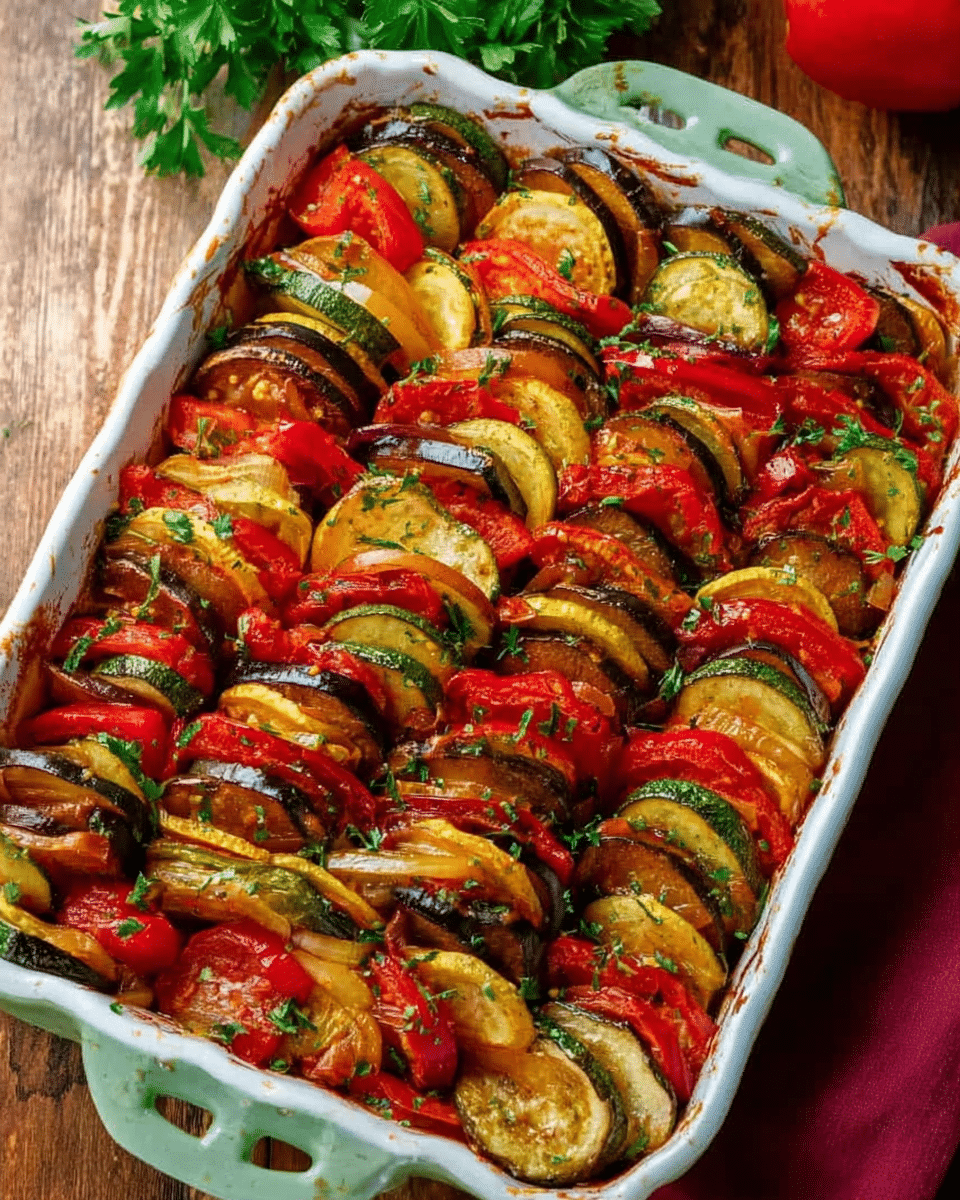Classic French Provencal Ratatouille is a quintessential summer dish, brimming with the vibrant flavors of late-season vegetables and aromatic herbs. This easy, oven-baked recipe is simple to make, versatile, and can even be frozen for later enjoyment. Originally considered “peasant food,” this vegetable medley is perfect as a side dish, main course, or salad, and pairs well with a variety of meats, grains, or pasta.
Full Recipe:
Ingredients
-
2 tablespoons olive oil
-
2 yellow onions, sliced
-
4 cloves garlic, roughly chopped
-
4-5 medium tomatoes, sliced
-
4 small to medium zucchinis, sliced
-
2 medium eggplants, stemmed and sliced
-
1 medium yellow bell pepper, sliced
-
1 medium green bell pepper, sliced
-
1 teaspoon dried thyme
-
¼ teaspoon dried dill
-
2 tablespoons fresh oregano leaves (or 1 teaspoon dried)
-
2 tablespoons fresh basil leaves, chopped (or 1 teaspoon dried)
Directions
-
Prepare the Vegetables: Preheat the oven to 400°F (200°C). Brush a baking pan with olive oil and set aside. In a large bowl, combine the sliced onions, garlic, tomatoes, zucchini, eggplant, and bell peppers. Sprinkle with salt, pepper, thyme, dill, oregano, and basil. Drizzle with olive oil and toss everything together.
-
Layer the Vegetables: Layer the seasoned vegetables into the prepared pan. Cover tightly with foil.
-
Bake: Place the pan in the oven and bake for 1 hour, or until the vegetables are bubbling and the eggplant is tender.
-
Serve: Remove from the oven, sprinkle with fresh herbs, and serve immediately. Ratatouille is delicious on its own, over rice, pasta, or with toasted slices of French bread. Add ground meat or cooked chicken for additional protein if desired.
Nutrients (Per Serving)
-
Calories: 136 kcal
-
Carbohydrates: 22 g
-
Protein: 5 g
-
Fat: 5 g
-
Saturated Fat: 1 g
-
Polyunsaturated Fat: 4 g
-
Sodium: 13 mg
-
Fiber: 9 g
-
Sugar: 11 g






